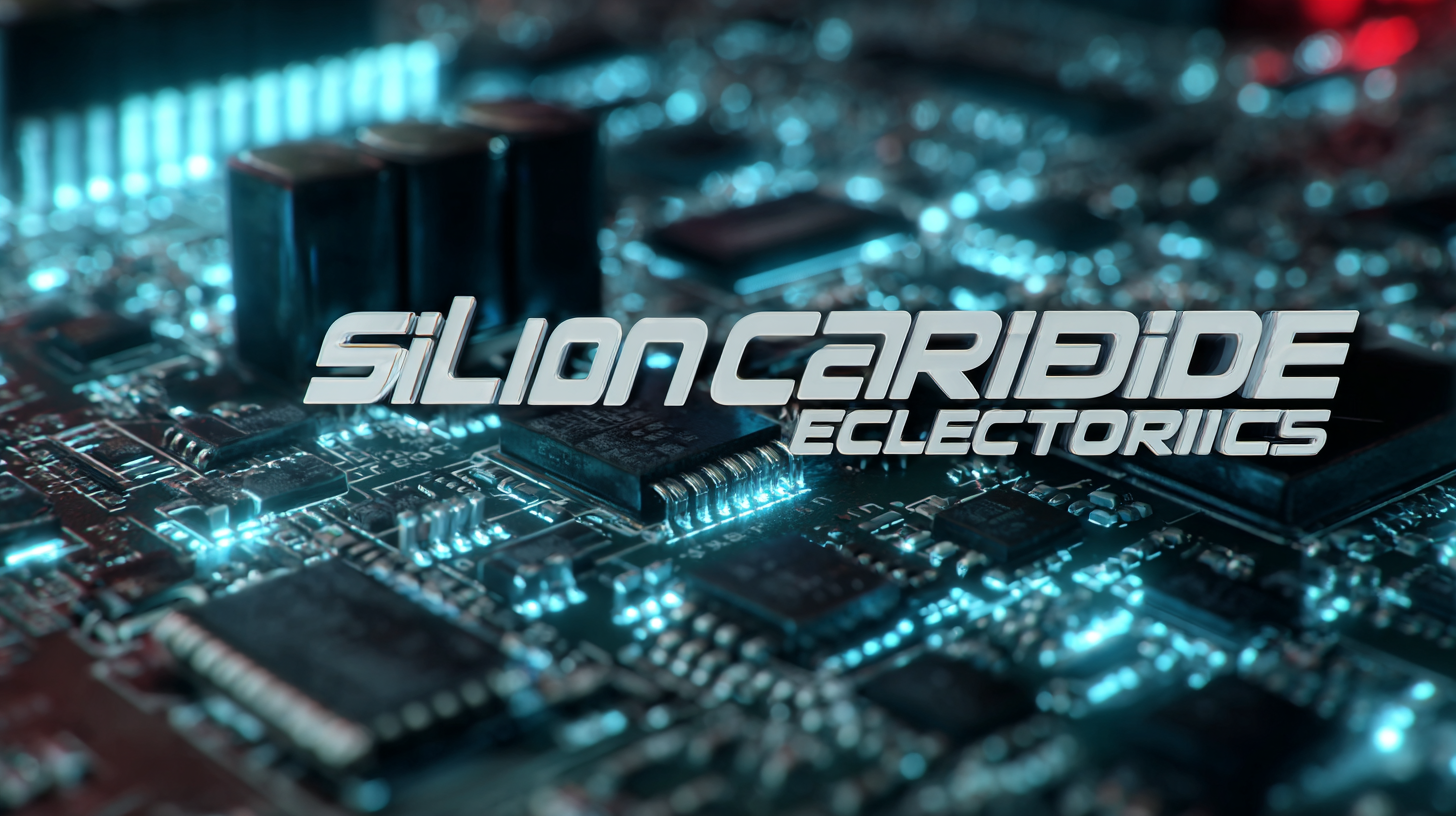The demand for Silicon Carbide Electronics is rapidly escalating, driven by the industry's need for higher efficiency and performance in a range of applications, from renewable energy to electric vehicles. According to the latest market analysis by Fortune Business Insights, the global Silicon Carbide market is projected to reach $6.78 billion by 2026, growing at a CAGR of 30.1% from 2019 to 2026. This growth is largely attributed to the unparalleled advantages of Silicon Carbide, such as its ability to perform at high temperatures and voltages, making it an essential component for next-generation electronic devices. Leading Chinese factories are at the forefront of this revolution, leveraging advanced manufacturing processes and innovative technologies to produce high-quality Silicon Carbide products tailored for global markets. With an unmatched commitment to excellence, these manufacturers are setting the standard for future developments in the semiconductor industry.

Chinese manufacturers are making significant advancements in silicon carbide (SiC) technology, exemplified by Nanjing's recent breakthrough in manufacturing key SiC chips. This development marks a pivotal moment in the semiconductor landscape, particularly as industries seek to enhance efficiency and performance. The National Third-Generation Semiconductor Technology Innovation Center in Nanjing has been at the forefront, driving innovations that align with the global demand for high-performance materials in electric mobility and 5G telecommunications.
As the automotive sector increasingly relies on advanced semiconductors, the implications of these innovations are profound. The automotive industry's demands for higher power densities and energy efficiency serve as a key driver for these technological advancements. The collaboration among Chinese factories to focus on semiconductor production not only strengthens their market position but also underscores the strategic importance of maintaining value chains within the country. This proactive approach positions China as a critical player in the evolving global semiconductor market, particularly as it navigates export controls and aims for technological self-sufficiency.
The global silicon carbide (SiC) semiconductor market is projected to reach an impressive USD 11,783.1 million by 2033, growing at a staggering CAGR of 18.5%. This rapid expansion highlights the increasing demand for SiC technology, particularly in sectors such as electric vehicles, renewable energy, and advanced manufacturing. As countries look to enhance their energy efficiency and reduce carbon footprints, silicon carbide emerges as a critical component in power electronics, showcasing its superior performance and thermal conductivity compared to traditional silicon.

In the realm of semiconductor production, Chinese manufacturers are making significant strides, although they still lag approximately five years behind leading global producers in high-volume specialty chips. This gap particularly affects advanced logic and memory modules, where innovation and investment in R&D are vital. However, China's attention to the SiC market is indicative of its strategic shift toward high-performance materials, driving innovation and competitiveness in the global arena. As the landscape evolves, the growing capabilities of Chinese silicon carbide production could reshape the competitive dynamics, positioning China as a formidable player in semiconductor technologies for years to come.
The global demand for silicon carbide (SiC) electronics is rapidly increasing, driven by its exceptional properties that make it indispensable across various industries. Forecasts indicate that the global hard mask materials market will reach $1.74 billion in 2024 and expand to $6.03 billion by 2033, reflecting a remarkable compound annual growth rate (CAGR) of approximately 14.8%. This growth trajectory is a testament to the rising need for advanced materials that can withstand extreme conditions, a capability that silicon carbide significantly enhances due to its high thermal conductivity and efficiency.
Furthermore, the GaN substrate market is poised for substantial growth, with a market size of $241.4 million in 2023. As the demand for efficient power electronics continues to escalate, this segment is expected to experience a CAGR exceeding 10% from 2024 to 2032. Similarly, the GaN power devices market, which was valued at $150 million in 2022, is projected to undergo rapid development, reaching $850 million by 2030, spurred by a staggering CAGR of 25.1% from 2024 to 2030. These trends illustrate the vital role that SiC and related technologies will play in shaping the future of electronic devices and systems, underscoring the unmatched excellence emerging from leading manufacturers in China for global markets.
| Industry Sector | Market Size (USD Billion) | Growth Rate (%) | Key Applications |
|---|---|---|---|
| Electric Vehicles | 12.5 | 20% | Power Electronics, Charging Stations |
| Renewable Energy | 8.3 | 15% | Inverters, Grid Management |
| Telecommunications | 5.6 | 10% | Base Stations, Fiber Optics |
| Industrial Automation | 4.2 | 12% | Robotics, Process Control |
| Consumer Electronics | 3.1 | 8% | Smartphones, Laptops |
In the realm of silicon carbide (SiC) electronics, leading Chinese factories have set a high standard for quality assurance practices, ensuring their products meet global market demands. These facilities implement rigorous quality control measures at every stage of the manufacturing process, from the sourcing of raw materials to the final product inspection. By adhering to international standards and utilizing advanced testing protocols, they not only bolster their reputation but also contribute to a more reliable supply chain, especially significant in light of recent industry shifts.
As the semiconductor landscape evolves, manufacturers face challenges such as fluctuating demand and new market entrants. The production of high-accuracy components, like the world's largest SiC aspheric mirror, exemplifies the complexities involved in maintaining quality amidst these changes. Chinese manufacturers are now leveraging technological advancements and innovative practices to navigate these uncertainties, positioning themselves as formidable players on the global stage. This proactive approach not only enhances their competitiveness but also serves to reassure international customers of their commitment to excellence and reliability in the silicon carbide sector.
The rapid evolution of Silicon Carbide (SiC) electronics is set to redefine the global power semiconductor landscape. As the demand for efficient and high-performance electronic components skyrockets, particularly with the surge in electric vehicle (EV) adoption, SiC technology is uniquely positioned to meet these needs. The commercialization of SiC MOSFETs in 2008 marked a significant milestone, paving the way for their increasing integration into various applications, including renewable energy systems and power conversions.

Market analysts project a steady growth trajectory for power electronics, with revenues expected to rise from $23.8 billion in 2023 to an impressive $35.7 billion by 2026. This growth highlights the crucial role SiC and Gallium Nitride (GaN) play in advancing semiconductor technologies. However, the landscape is not without its challenges; uncertainties in the silicon carbide wafer market necessitate robust strategies from manufacturers to navigate supply and demand dynamics effectively. As factories in China strive for excellence, they are well-equipped to adapt to these market shifts, showcasing the importance of innovation and resilience in silicon carbide electronics on a global scale.
